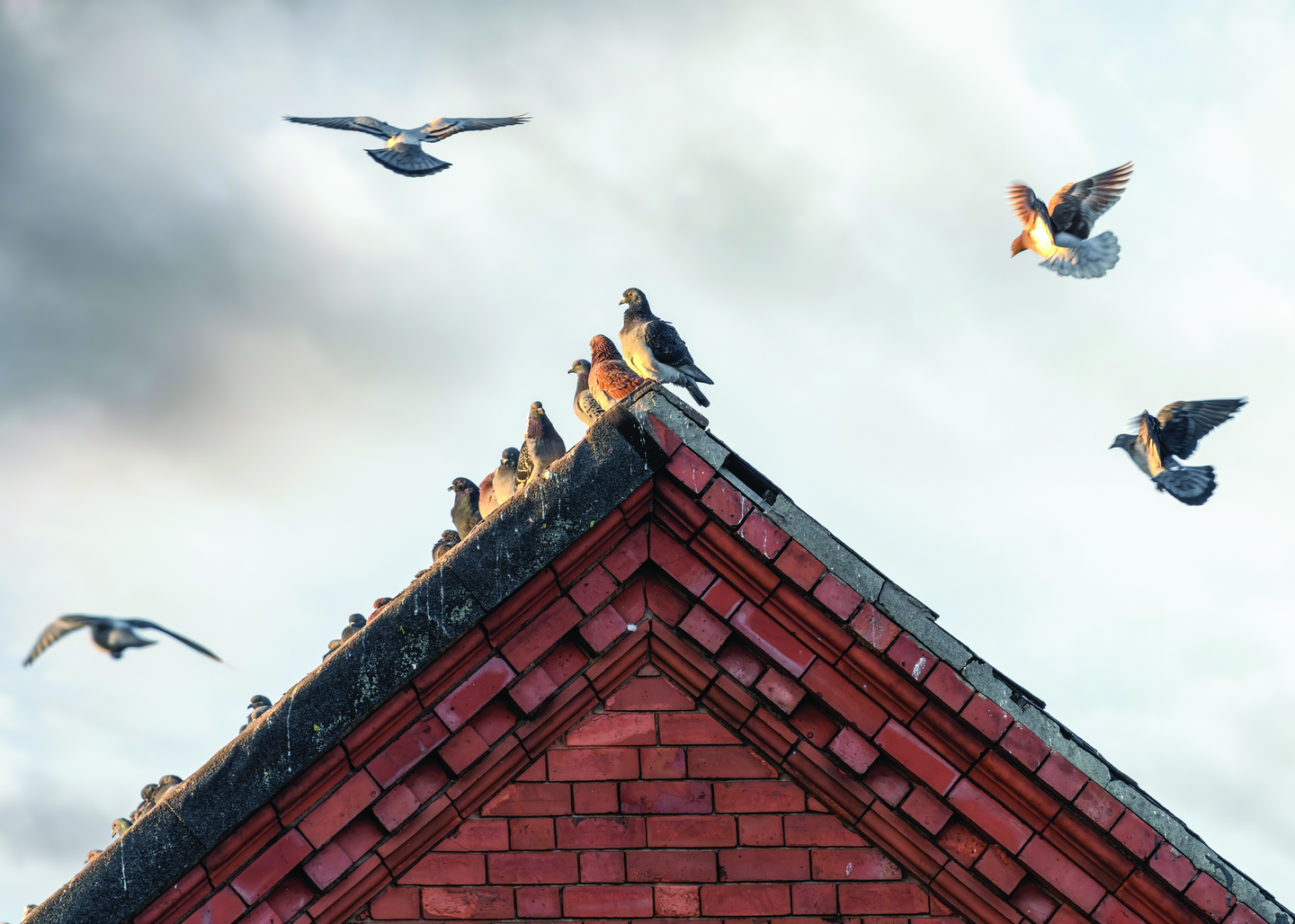
Roofing
Nixalite of America & Bird-X Stand-Up to Feathered Foes
Bird control at public and private buildings is a major issue, and today there are a variety of non-invasive, virtually invisible measures property owners can take without harming these avian adversaries.
The products are sold and manufactured by only a handful of U.S. specialty companies, including Nixalite of America and Bird-X, which are based in Illinois.
While the feathered creatures can be attractive assets—it’s amazing to see a flock of seagulls winging their way from the belfry of a church toward the water—they also are carriers of over 60 diseases, including the West Nile virus and encephalitis, and possess habits that can deteriorate and damage property.
“There are different options with different degrees of effectiveness,” says Cory Gellerstedt, co-president of Nixalite of America. “The continuous cleanup of bird droppings can be time-consuming and very costly. By installing an effective bird-control system, it can save thousands of dollars in cleanup and keep your building clean and safe from bird-borne disease.”
Tim Coughlin, national account manager for Bird-X, says that new building projects specify bird-control measures and that physical barriers, in most cases, are recommended because they are the “safest, most humane and effective, lowest-price solution.”
Although the four main pest species—pigeons, starlings, sparrows, and gulls—are excluded, birds and their nests, eggs, and feathers are protected under the Migratory Bird Treaty Act of 1918.
Gellerstedt and Coughlin say that it’s important to use products that are humane and don’t intentionally injure or harm birds.
There are a number of short-term solutions, ranging from visual deterrents like fake owls and sticky gel repellents to chemical repellents. Coughlin and Gellerstedt advocate a variety of physical barriers and exclusion products.
Bird Spikes
These mechanical barriers feature spikes that point upward to repel birds and are designed to visually blend in with their surroundings. Versatile, they may be installed on building ledges, parapets, roof ridges, gutters, signs, awnings, air conditioners, rafters, shutters, and other bird-landing spots. The most durable versions are made of stainless steel. A spike that has many wire points that are strategically placed close together and that are pointing in all directions will deter most birds. “They are not a good solution for smaller birds like sparrows,” Coughlin says. “They will nest in the spikes.”
Gellerstadt adds that Nixalite’s Premium Model S Bird Spike “can be effective for sparrows in the right situation and when installed properly.”
Netting
For access control in open spaces such as warehouses and overhangs, rafters and beams, netting is a good option. The best nets are strong, lightweight, and ultraviolet stabilized to reduce deterioration and have openings that are .75 inch or smaller so tiny birds cannot fly through.
“When installed correctly,” Gellerstedt says, “netting will blend into the architecture and be hard to detect.”
Sticky Paste and Liquid Repellents
A short-term solution, these non-drying, non-toxic sticky compounds irritate birds’ feet. Over time, the product will discolor, attract dirt, bugs, and debris and will have to be removed and reapplied.
“You have to be careful not to put too much down,” Gellerstedt says, “because it may run in hot weather, and small birds may get caught in it and get injured. If you don’t apply enough, it may not repel the birds.”
Pin and Wire
Mechanical barriers, pin and wire products are based on the premise that birds will not land on surfaces that are covered with tight strands of wire; they are most effective for repelling large birds in light-pressure areas. Like bird spikes, they do not affect the aesthetics of the architecture.
“In heavy infestation situations, birds can roost and build nests into the wire,” Gellerstedt says. “These systems work best when covering very narrow surfaces such as railings along balconies and where there is moderate human activity.”
Indoor and Outdoor Lasers
These devices, Coughlin says, chase away the birds via constantly changing patterns that prevent acclimation. “The beam seeks out their roosting spots, alarming and confusing them, causing them to flee,” he says.
Noting that every bird problem is different, Coughlin says that “there are no one-size-fits-all solutions. We take into consideration several factors and ask a series of questions: How long have the birds been a concern? What type of birds are they? Are they nesting? What has been tried? When do you want to address the concerns? What is the budget?”
Nixalite of America and Bird-X work with a variety of clients, including architects, engineers, and contractors as well as homeowners. Their products are available online.
“We offer on-site consulting for a fee, but people can utilize our free in-house planning services,” Gellerstedt says. “We can access bird problems by viewing photos, videos, architectural plans, and even use Google Earth to view facilities, landscapes, and crops.”
The right solution, Gellerstedt and Coughlin agree, is the one that benefits humans as well as birds.









